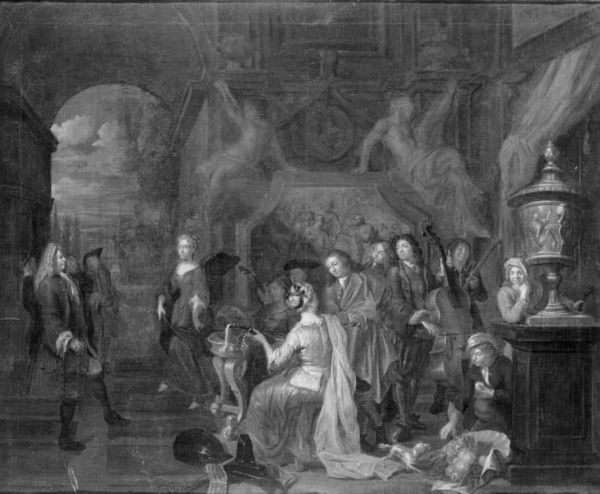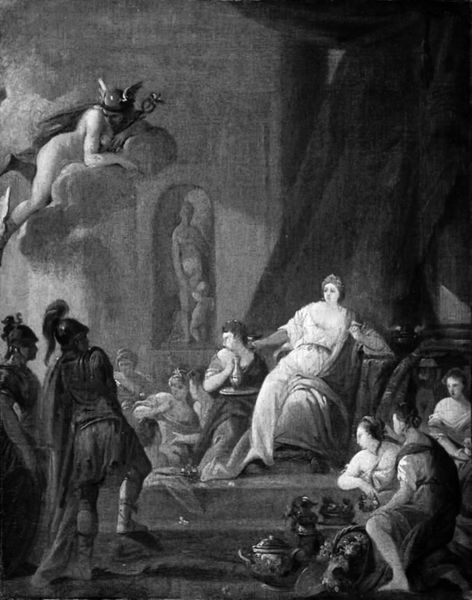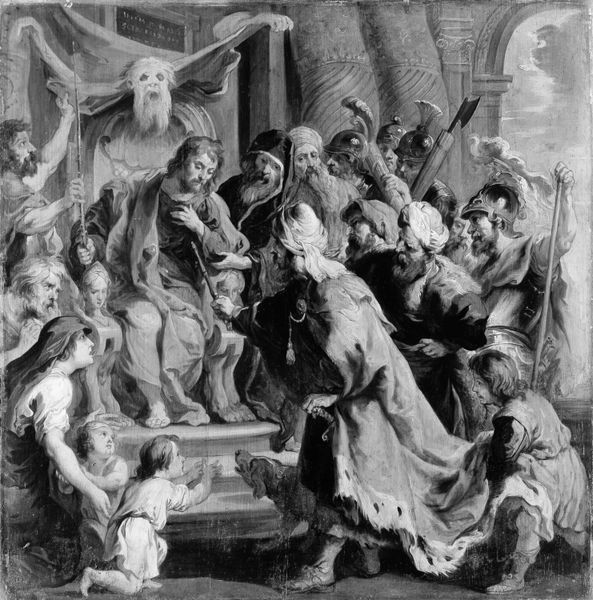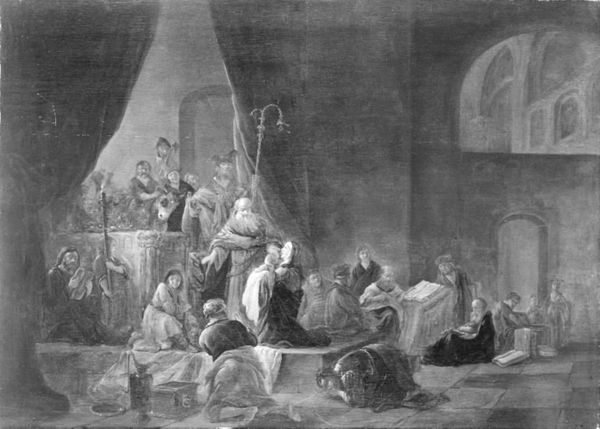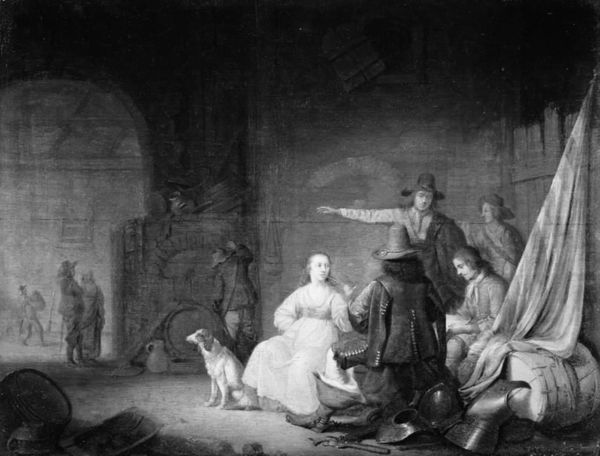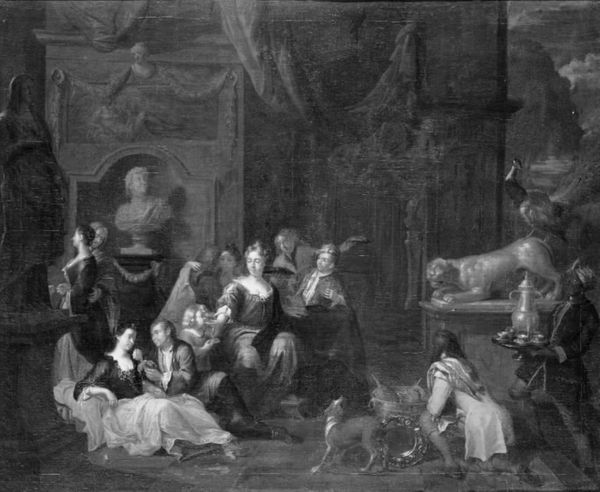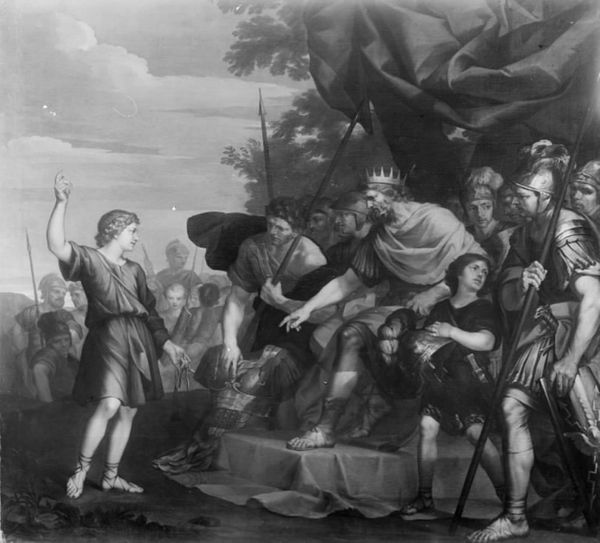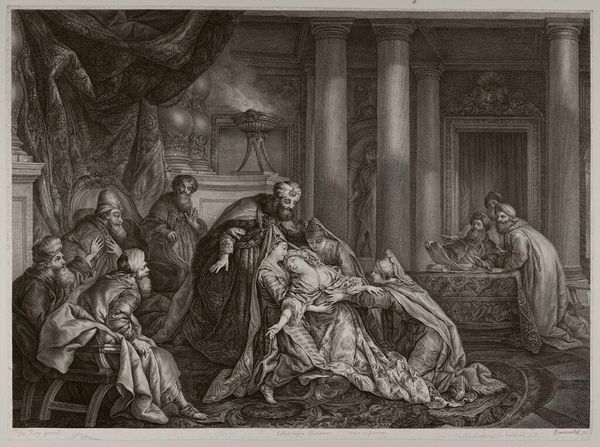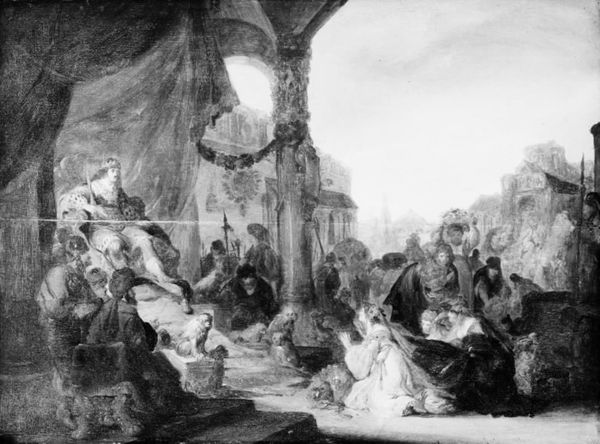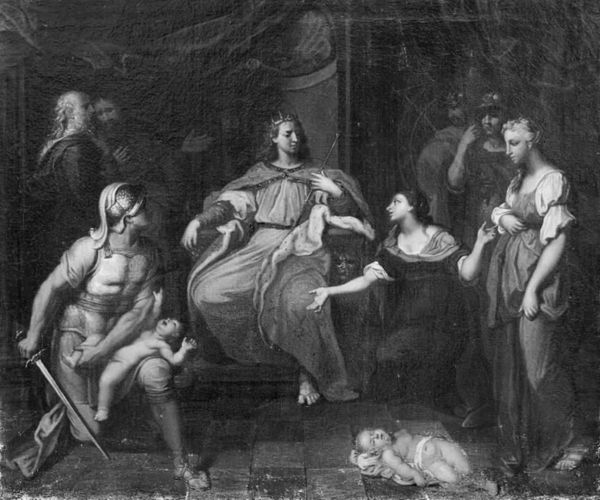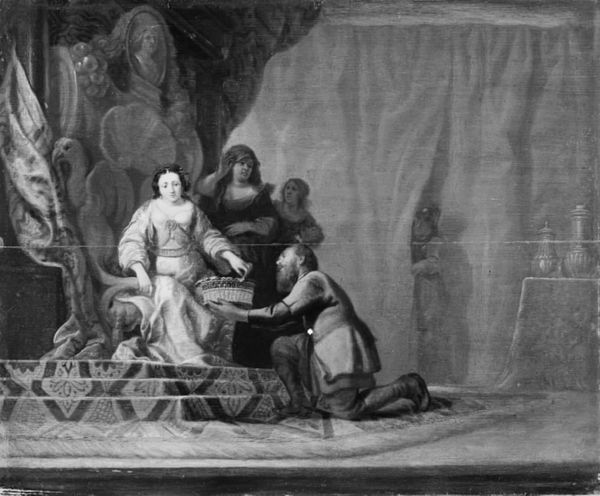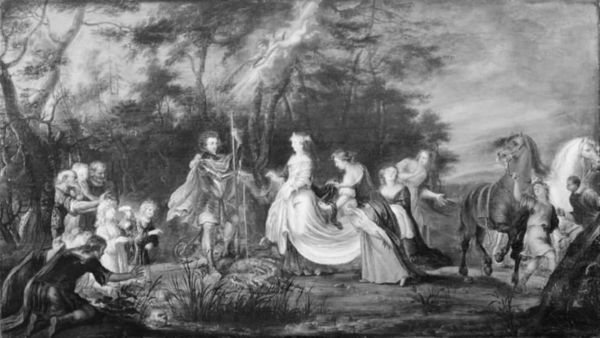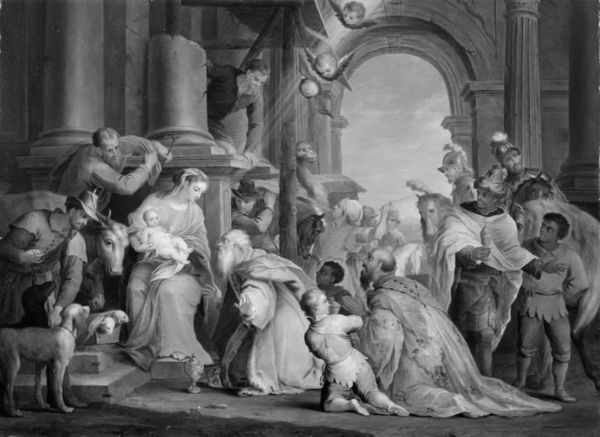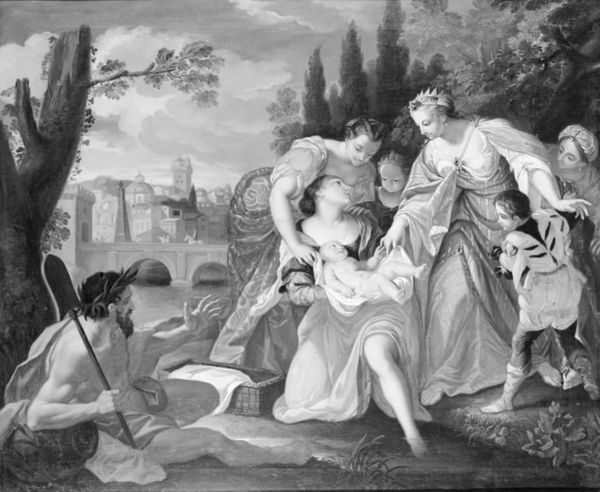
painting
#
allegory
#
baroque
#
painting
#
figuration
#
black and white
#
history-painting
#
academic-art
#
monochrome
#
monochrome
Dimensions: 58.3 cm (height) x 71.9 cm (width) (Netto)
Curator: This piece, titled "An Allegory," was created by Hieronimo Miani in 1739. It is currently housed here at the SMK. What strikes you most upon viewing this painting? Editor: It feels quite dramatic, despite its monochrome palette. The figures are arranged in a very theatrical way. You've got gestures, glances—a real sense of something significant unfolding. What materials did Miani use to produce this rather large painting? I’m interested to hear about its physical composition, given the detail here. Curator: Miani worked with oil paint on canvas, a common choice for large-scale allegorical works during the Baroque period. The use of oil allows for rich layering and blending. Looking at the symbolism, we see what seems like an armored figure center-left, maybe Minerva? And that seated, crowned woman on the right, clearly representing…well, some concept of regality perhaps thrown into despair. Editor: Indeed. Notice the repetition of shields; they appear defensive but are also, let’s face it, decorative. They suggest a civilization obsessed with protection. This shield imagery could be reflecting tensions, or anxieties surrounding Venetian authority at the time, couldn't it? I mean what is Venice protecting itself against? The very brushstrokes feel tied to its societal pressures. Curator: An interesting theory. But the symbolic reading leans more towards universal themes of power, loss, and perhaps the fragility of peace. The central figure, for me, echoes ideas found in classical sculpture… while that fallen figure there points more overtly to despair. What readings have scholars made based on material analysis? Is the canvas itself perhaps, from a region recently conquered by the Venetian powers? Editor: Unfortunately, material records give us no indication of this. More plainly the weave tells a story about available production and artistic technique more widely at that time. This points to wider consumption patterns which speak to status in a growing market of taste. These shields might seem classically inspired, but I cannot escape the suspicion that we can see Miani alluding to their monetary and mercantile value in Venice as a city. Curator: That is interesting, as you can also read those shields as tools in allegorical narratives which go beyond solely trade; a rich symbolic landscape. I feel like I now appreciate better the piece’s potential depths—it’s so striking when considering these multiple approaches. Editor: Indeed. These interwoven considerations open up new dialogues around artwork value, the relationship between craftsmanship and production within larger symbolic gestures. Thank you!
Comments
No comments
Be the first to comment and join the conversation on the ultimate creative platform.
